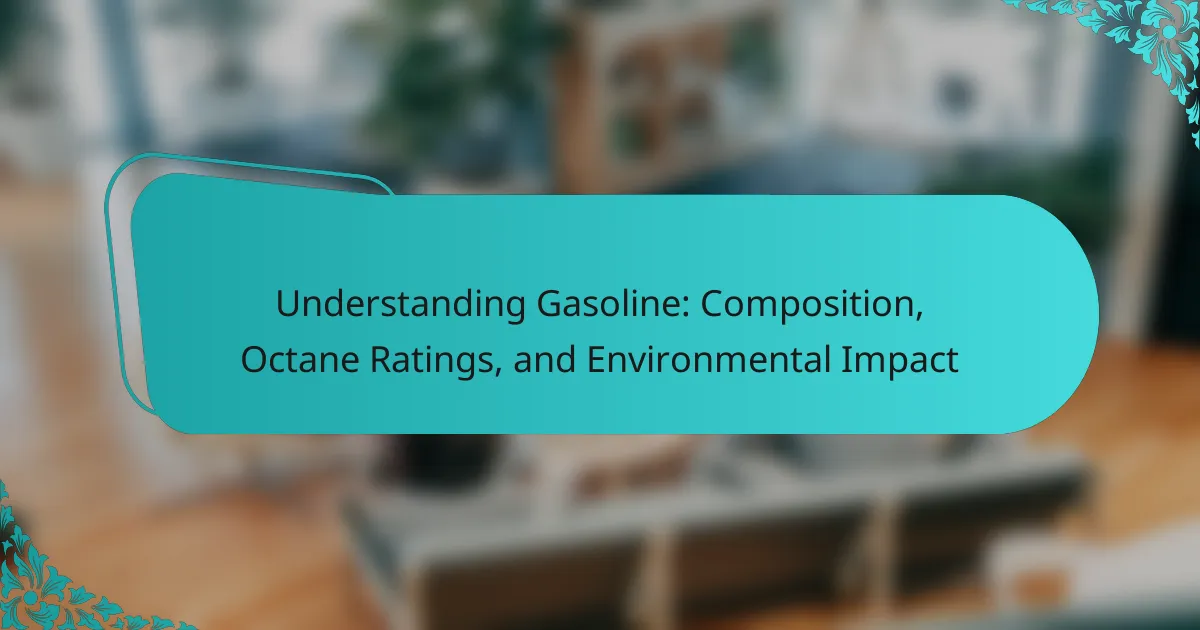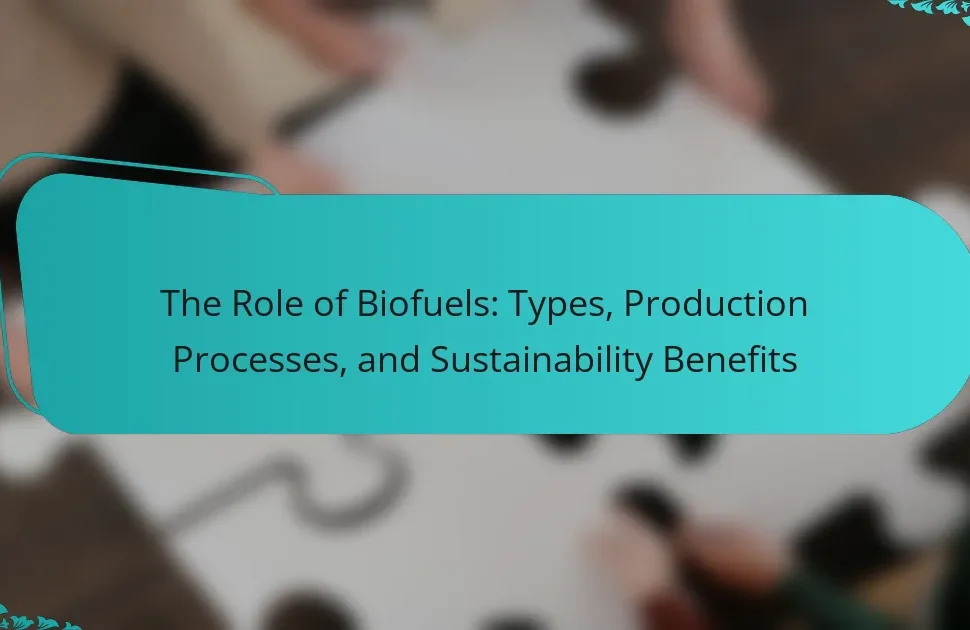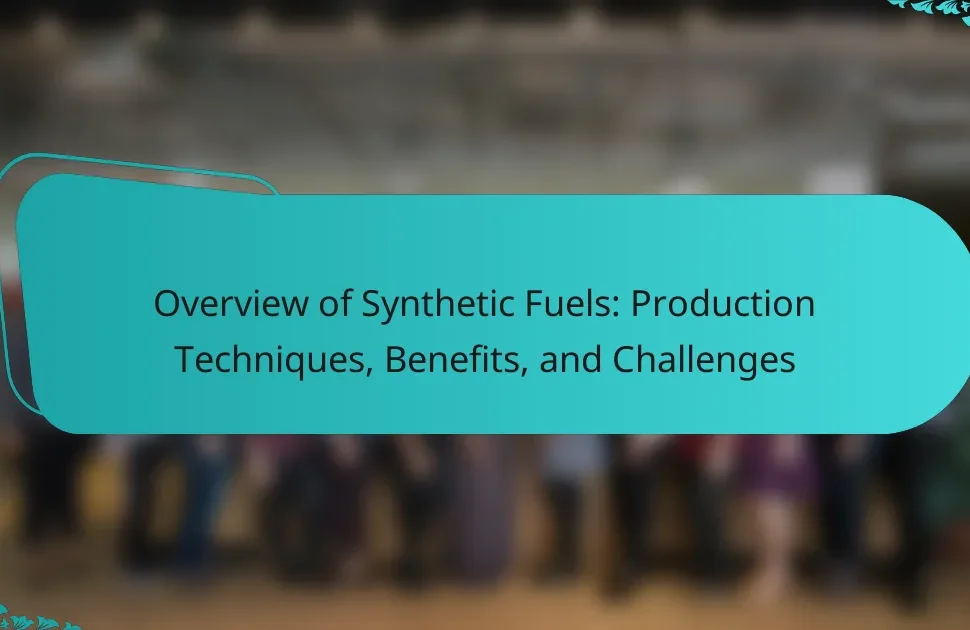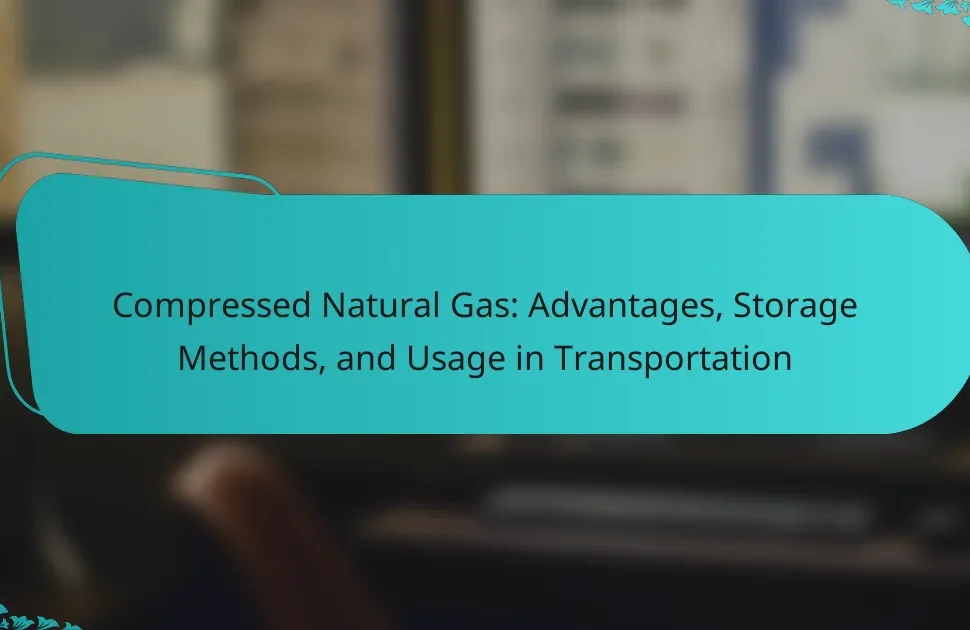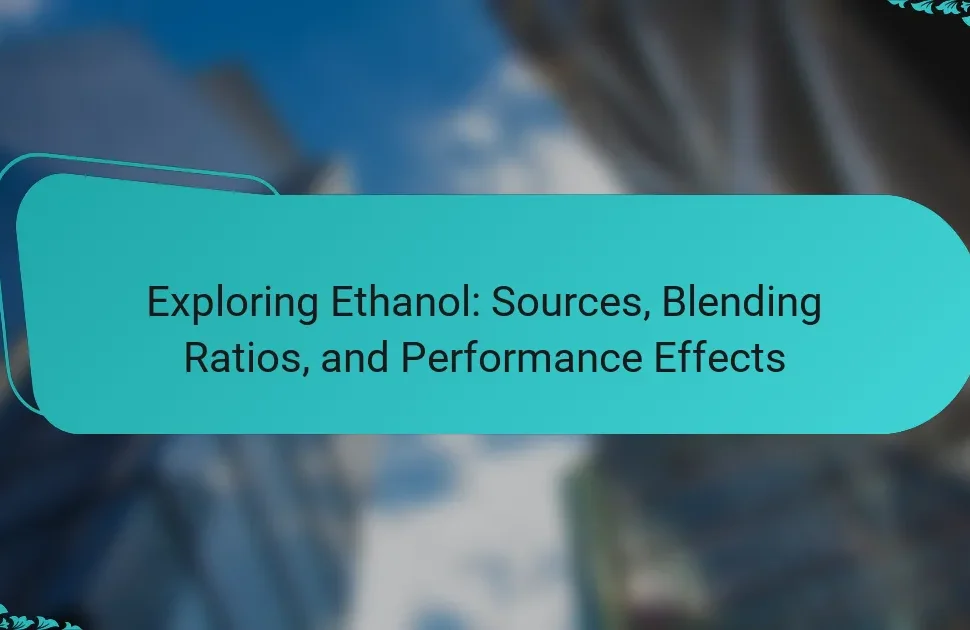
What is Gasoline?
Gasoline is a refined petroleum product used primarily as fuel in internal combustion engines. It is composed of hydrocarbons, which are derived from crude oil through a refining process. Gasoline typically contains additives to enhance performance and reduce emissions. It has a high energy density, making it an efficient fuel source. The octane rating of gasoline measures its ability to resist knocking during combustion. Common octane ratings include 87, 89, and 93. Gasoline is a significant contributor to air pollution and greenhouse gas emissions. Its combustion releases carbon dioxide, carbon monoxide, and other pollutants into the atmosphere.
How is Gasoline Defined in the Context of Fuels?
Gasoline is defined as a petroleum-derived liquid fuel primarily used in internal combustion engines. It consists of a complex mixture of hydrocarbons, typically containing between 5 to 12 carbon atoms per molecule. Gasoline is characterized by its volatility, which allows it to vaporize easily for combustion. The fuel is formulated to have specific octane ratings, indicating its resistance to knocking during engine operation. Gasoline’s composition can vary based on refining processes and regional regulations. It typically includes additives to enhance performance and reduce emissions. In the context of fuels, gasoline is one of the most commonly used energy sources for vehicles worldwide. Its widespread use is supported by infrastructure such as gas stations and distribution networks.
What are the Key Components of Gasoline?
The key components of gasoline include hydrocarbons, additives, and oxygenates. Hydrocarbons are the primary constituents, typically ranging from C4 to C12 in carbon chain length. These hydrocarbons are derived from crude oil through refining processes. Additives enhance performance and stability, including detergents and anti-knock agents. Oxygenates, such as ethanol, are included to improve combustion efficiency and reduce emissions. The composition of gasoline can vary based on regional regulations and seasonal requirements. For instance, the Environmental Protection Agency (EPA) mandates specific formulations to minimize air pollution.
How is Gasoline Different from Other Fuels?
Gasoline is a refined petroleum product primarily used in internal combustion engines. It differs from other fuels in its chemical composition, which includes hydrocarbons and additives for performance. Gasoline typically has a lower boiling point compared to diesel and other heavier fuels. This allows it to vaporize more easily, making it suitable for quick ignition in engines.
Additionally, gasoline is often blended with ethanol, enhancing its octane rating and reducing emissions. In contrast, fuels like diesel are denser and contain more energy per gallon, leading to different combustion characteristics. Gasoline engines operate at higher RPMs, whereas diesel engines provide more torque at lower RPMs.
These differences contribute to varied applications and performance in vehicles. Gasoline’s volatility and energy density make it ideal for light-duty vehicles, while diesel’s efficiency suits heavy-duty applications.
What are the Main Uses of Gasoline?
Gasoline is primarily used as a fuel for internal combustion engines. It powers vehicles such as cars, motorcycles, and trucks. Gasoline is also utilized in small engines for lawnmowers, chainsaws, and other outdoor equipment. Additionally, it serves as a solvent in various industrial applications. Gasoline is a key component in the production of chemicals and plastics. Its versatility makes it a crucial energy source in many sectors. According to the U.S. Energy Information Administration, transportation accounts for about 70% of U.S. gasoline consumption.
How Does Gasoline Power Different Types of Vehicles?
Gasoline powers different types of vehicles by igniting in the engine’s combustion chamber. This ignition creates a controlled explosion that generates power. The power produced drives the pistons, which turn the crankshaft. The crankshaft ultimately propels the vehicle forward. Gasoline engines vary in design, affecting performance and efficiency. For example, internal combustion engines use gasoline to create mechanical energy. In contrast, hybrid vehicles combine gasoline engines with electric motors for improved fuel efficiency. Each vehicle type optimizes gasoline use based on its engine design and intended application. The efficiency of gasoline combustion in these engines typically ranges from 20% to 30%, influencing overall vehicle performance.
What Role Does Gasoline Play in Industrial Applications?
Gasoline serves as a vital fuel source in various industrial applications. It powers machinery, vehicles, and equipment used in construction, transportation, and manufacturing. Gasoline’s high energy density enables efficient operation of internal combustion engines. In the construction industry, gasoline fuels generators and power tools. The transportation sector relies on gasoline for trucks, buses, and other vehicles. Additionally, gasoline is used in the production of chemicals and plastics. The versatility of gasoline makes it a preferred choice for many industrial operations. Historical data shows that gasoline has been a primary fuel for over a century, highlighting its longstanding importance in industrial activities.

What is the Composition of Gasoline?
Gasoline is primarily composed of hydrocarbons, which are organic compounds made up of hydrogen and carbon atoms. The hydrocarbons in gasoline typically range from C4 to C12, meaning they contain four to twelve carbon atoms per molecule. Common components include alkanes, cycloalkanes, and aromatic hydrocarbons.
Alkanes provide the majority of gasoline’s energy content. Cycloalkanes contribute to the fuel’s stability and performance. Aromatic hydrocarbons, such as benzene, toluene, and xylene, enhance octane ratings but are present in lower amounts due to environmental regulations.
Additives are also included in gasoline to improve performance and reduce emissions. These may include detergents, antioxidants, and octane boosters. The specific composition can vary based on geographic location and regulatory standards. For example, the American Petroleum Institute states that gasoline typically contains around 10-15% ethanol in many regions.
What are the Primary Ingredients in Gasoline?
The primary ingredients in gasoline are hydrocarbons. These hydrocarbons are derived from crude oil through a refining process. Gasoline typically contains alkanes, cycloalkanes, and aromatic hydrocarbons. Common alkanes in gasoline include octane, heptane, and pentane. Cycloalkanes such as cyclohexane are also present. Aromatic hydrocarbons like benzene and toluene contribute to gasoline’s properties. The composition of gasoline can vary based on the source of crude oil and refining methods. According to the U.S. Energy Information Administration, gasoline is primarily made up of 10 to 15 carbon atoms in its hydrocarbon structure.
How Do Hydrocarbons Contribute to Gasoline Composition?
Hydrocarbons are the primary components of gasoline. They consist of hydrogen and carbon atoms. These compounds provide the energy needed for combustion in engines. Hydrocarbons in gasoline include alkanes, cycloalkanes, and aromatics. Alkanes are straight-chain hydrocarbons that contribute to fuel stability. Cycloalkanes enhance the octane rating, improving engine performance. Aromatics, while providing energy, can lead to higher emissions. The balance of these hydrocarbons affects gasoline’s volatility and emissions. Studies show that gasoline typically contains 30-50% aromatics, influencing environmental impact.
What Additives are Commonly Found in Gasoline?
Common additives found in gasoline include ethanol, detergents, and anti-knock agents. Ethanol is often blended with gasoline to enhance octane ratings and reduce emissions. Detergents help keep fuel injectors clean, improving engine performance. Anti-knock agents, such as MTBE or ETBE, prevent engine knocking during combustion. Other additives include antioxidants, which prevent fuel degradation, and corrosion inhibitors, which protect fuel system components. The use of these additives is regulated to ensure compliance with environmental standards.
How Does Gasoline Composition Affect Performance?
Gasoline composition significantly affects engine performance. The specific blend of hydrocarbons in gasoline determines its energy content and combustion characteristics. Higher octane ratings allow for more efficient combustion, reducing engine knocking. This efficiency translates to better acceleration and power output. Additionally, the presence of additives can enhance fuel stability and cleanliness, promoting optimal engine function. Studies show that fuels with higher aromatic content can improve performance in some engines. Conversely, excessive ethanol in gasoline can lead to reduced energy density. Therefore, the composition directly influences fuel efficiency, emissions, and overall vehicle performance.
What Impact Do Different Hydrocarbon Chains Have on Engine Efficiency?
Different hydrocarbon chains significantly impact engine efficiency. Shorter hydrocarbon chains generally provide better combustion characteristics. They tend to vaporize more easily, leading to improved fuel-air mixing. This results in more complete combustion within the engine. In contrast, longer hydrocarbon chains can lead to incomplete combustion. This often results in higher emissions and reduced power output. A study by the American Petroleum Institute shows that fuels with optimal chain lengths improve thermal efficiency by up to 10%. Therefore, the choice of hydrocarbon chain length is critical for maximizing engine performance.
How Do Additives Influence Emissions and Engine Health?
Additives influence emissions and engine health by modifying combustion efficiency and reducing harmful byproducts. Certain additives, such as detergents, help maintain fuel injectors and prevent deposits. This leads to more complete combustion, which reduces unburned hydrocarbons and particulate matter in emissions. Additionally, anti-knock agents can enhance octane ratings, allowing engines to run more efficiently. Improved efficiency often results in lower emissions of nitrogen oxides and carbon monoxide. However, some additives may produce harmful compounds if not properly formulated. Research shows that specific formulations can significantly lower emissions while promoting engine longevity.

What are Octane Ratings and Why Do They Matter?
Octane ratings measure a fuel’s ability to resist engine knocking or pinging during combustion. Higher octane ratings indicate greater resistance to knocking. This is crucial for high-performance engines, which operate at higher compression ratios. Using fuel with the correct octane rating enhances engine performance and efficiency. It can also prevent potential engine damage caused by knocking. The octane rating system typically uses two scales: Research Octane Number (RON) and Motor Octane Number (MON). The average of these two values is often displayed at fuel pumps. In the U.S., regular gasoline usually has an octane rating of 87, while premium can go up to 93. Proper octane ratings contribute to optimal vehicle operation and longevity.
What is the Definition of Octane Rating?
Octane rating is a measure of a fuel’s ability to resist knocking during combustion. It indicates the fuel’s performance in an engine. Higher octane ratings mean better resistance to knocking. This is crucial for high-performance engines. Regular gasoline typically has an octane rating of 87. Premium gasoline usually has a rating of 91 or higher. The octane rating is determined through standardized testing methods. These methods include the Research Octane Number (RON) and the Motor Octane Number (MON). Understanding octane ratings helps consumers choose the right fuel for their vehicles.
How is Octane Rating Measured?
Octane rating is measured using standardized tests to determine a fuel’s resistance to knocking. The two primary methods are the Research Octane Number (RON) and the Motor Octane Number (MON). RON is determined under controlled laboratory conditions at lower engine speeds. MON is measured at higher engine speeds and temperatures, simulating more severe operating conditions.
The octane rating is expressed as a number, with higher values indicating better performance and resistance to knocking. For example, regular gasoline typically has an octane rating of 87, while premium gasoline can range from 91 to 94.
These measurements are crucial for ensuring engine efficiency and preventing damage. The American Society for Testing and Materials (ASTM) has established standards for these testing methods, ensuring consistency across different fuel types.
What Do Different Octane Ratings Indicate About Gasoline?
Different octane ratings indicate the fuel’s ability to resist engine knocking. Higher octane ratings signify greater resistance to knocking. For example, regular gasoline typically has an octane rating of 87. Mid-grade gasoline usually has a rating of 89. Premium gasoline often has a rating of 91 or higher. Engines designed for high performance require higher octane fuel. Using lower octane fuel in these engines can lead to reduced efficiency and potential damage. Thus, octane ratings help consumers select the appropriate fuel for their vehicles.
How Does Octane Rating Affect Engine Performance?
Octane rating affects engine performance by determining the fuel’s resistance to knocking. Higher octane fuels can withstand greater compression before detonating. This allows for more efficient combustion in high-performance engines. Engines designed for high octane fuel can produce more power and better efficiency. For instance, many turbocharged and high-compression engines require a minimum octane rating to operate optimally. Using a lower octane fuel in such engines can lead to knocking, which reduces performance and may cause engine damage. According to the U.S. Department of Energy, using the recommended octane rating can improve fuel efficiency and reduce emissions.
Why is High-Octane Gasoline Recommended for Certain Engines?
High-octane gasoline is recommended for certain engines to prevent knocking and improve performance. High compression engines, such as those in sports cars and luxury vehicles, require fuel that can withstand higher pressures. This resistance to knocking enhances engine efficiency and power output. Additionally, high-octane fuel allows for advanced ignition timing, optimizing combustion. According to the American Automobile Association (AAA), using the recommended octane level can lead to better fuel economy. Manufacturers specify high-octane fuel for their engines to ensure optimal operation and longevity.
What Are the Consequences of Using Low-Octane Gasoline?
Using low-octane gasoline can lead to engine knocking and reduced performance. Low-octane fuel does not ignite as efficiently under high pressure. This inefficiency can cause premature ignition, resulting in knocking. Engine knocking can damage engine components over time. Additionally, using low-octane gasoline may lead to decreased fuel economy. Vehicles designed for higher octane ratings may not operate optimally with low-octane fuel. This can result in increased emissions and potential long-term damage to the engine. Manufacturers often recommend specific octane levels for optimal performance. Following these recommendations is crucial for maintaining engine health.
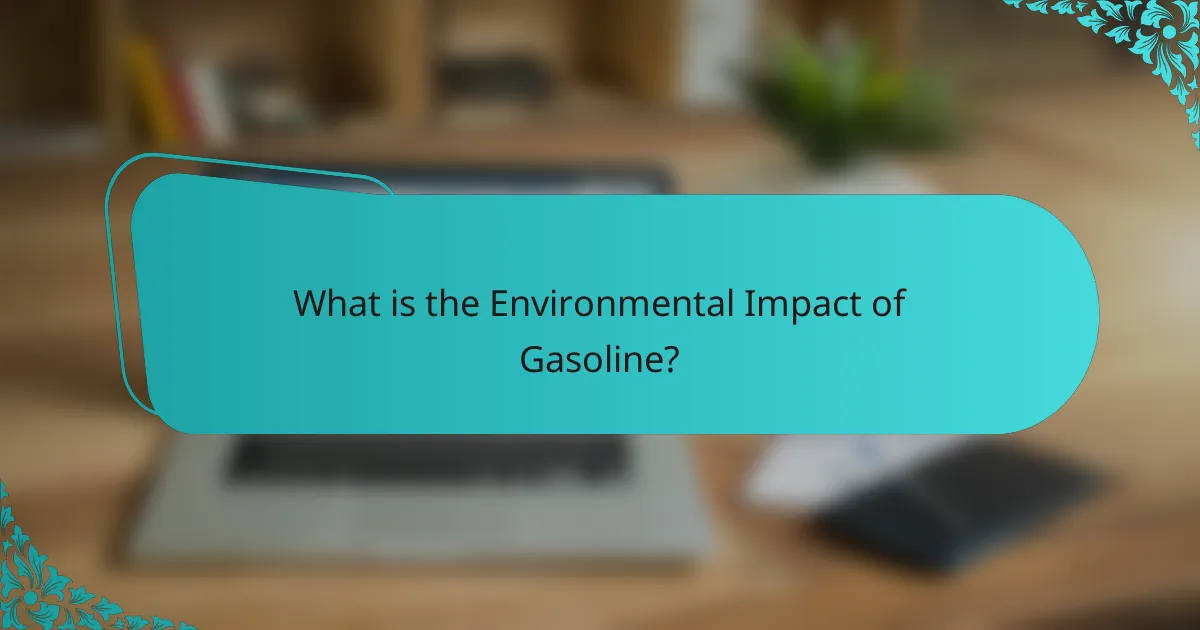
What is the Environmental Impact of Gasoline?
The environmental impact of gasoline is significant and multifaceted. Gasoline combustion releases carbon dioxide, a major greenhouse gas. This contributes to climate change, affecting global temperatures and weather patterns. Additionally, gasoline emits pollutants like nitrogen oxides and particulate matter. These pollutants can harm air quality and human health. Gasoline production also has environmental consequences. Extracting crude oil can lead to habitat destruction and oil spills. According to the U.S. Environmental Protection Agency, transportation accounts for about 29% of greenhouse gas emissions in the U.S. This highlights the role of gasoline in environmental degradation. Overall, gasoline’s impact encompasses air pollution, climate change, and ecological disruption.
How Does Gasoline Use Contribute to Air Pollution?
Gasoline use contributes to air pollution primarily through the emission of harmful pollutants. When gasoline is burned in vehicles, it releases carbon monoxide, nitrogen oxides, and volatile organic compounds. These substances react in the atmosphere to form ground-level ozone, a key component of smog. According to the U.S. Environmental Protection Agency, transportation is responsible for about 29% of total greenhouse gas emissions in the United States. Additionally, gasoline combustion generates particulate matter, which can lead to respiratory issues. The production and refining of gasoline also release pollutants, further impacting air quality. Overall, gasoline use significantly affects air pollution levels, contributing to health and environmental problems.
What Emissions are Produced When Gasoline is Burned?
Burning gasoline produces several emissions, primarily carbon dioxide (CO2), carbon monoxide (CO), nitrogen oxides (NOx), and volatile organic compounds (VOCs). Carbon dioxide is the most significant greenhouse gas released, contributing to climate change. Carbon monoxide is a toxic gas that can harm human health. Nitrogen oxides contribute to smog and acid rain formation. Volatile organic compounds can lead to ozone formation at ground level, which is harmful to respiratory health. According to the U.S. Environmental Protection Agency, the combustion of one gallon of gasoline produces approximately 19.6 pounds of CO2.
How Do Gasoline Emissions Affect Human Health and the Environment?
Gasoline emissions adversely affect human health and the environment. These emissions release pollutants like carbon monoxide, nitrogen oxides, and volatile organic compounds. Exposure to these pollutants can lead to respiratory issues, cardiovascular diseases, and neurological effects. For instance, the World Health Organization states that outdoor air pollution causes around 4.2 million premature deaths annually. Additionally, gasoline emissions contribute to environmental issues such as smog formation and climate change. Nitrogen oxides can lead to the creation of ground-level ozone, which harms crops and ecosystems. According to the Environmental Protection Agency, transportation accounts for nearly 29% of greenhouse gas emissions in the United States. Thus, gasoline emissions pose significant risks to both human health and environmental stability.
What Are the Alternatives to Gasoline?
Electric vehicles (EVs) are a primary alternative to gasoline. They operate using electric motors powered by batteries. EVs produce zero tailpipe emissions, reducing air pollution. Hydrogen fuel cells are another alternative, converting hydrogen into electricity. Biodiesel, derived from vegetable oils, can replace gasoline in diesel engines. Ethanol, made from corn or sugarcane, is often blended with gasoline. Compressed natural gas (CNG) is used in some vehicles as a cleaner fossil fuel option. Each alternative contributes to reducing dependence on fossil fuels and lowering greenhouse gas emissions.
How Do Electric Vehicles Compare to Gasoline-Powered Vehicles?
Electric vehicles (EVs) are generally more efficient and environmentally friendly compared to gasoline-powered vehicles. EVs convert over 60% of the electrical energy from the grid to power at the wheels. In contrast, gasoline vehicles convert only about 20% of the energy stored in gasoline. EVs produce zero tailpipe emissions, significantly reducing air pollutants. Gasoline vehicles emit carbon dioxide and other harmful substances, contributing to climate change and air quality issues. The average range of electric vehicles is increasing, with many models exceeding 250 miles per charge. Gasoline-powered vehicles typically offer a longer range but require more frequent refueling. EVs have lower operating costs, as electricity is often cheaper than gasoline. Maintenance costs for EVs are also lower due to fewer moving parts. Overall, electric vehicles present a cleaner and more efficient alternative to traditional gasoline-powered vehicles.
What Role Do Biofuels Play in Reducing Gasoline Dependency?
Biofuels play a significant role in reducing gasoline dependency by providing an alternative energy source for transportation. They are derived from renewable resources like plants and waste materials. This reduces reliance on fossil fuels, which are limited and contribute to environmental issues. The use of biofuels can lower greenhouse gas emissions compared to traditional gasoline. For example, studies show that bioethanol can reduce carbon dioxide emissions by up to 50% compared to gasoline. Additionally, the adoption of biofuels can enhance energy security by diversifying fuel sources. This shift also stimulates rural economies through agricultural production for biofuel feedstocks. Overall, biofuels contribute to a more sustainable energy landscape.
What Best Practices Can Help Minimize Gasoline’s Environmental Impact?
Adopting best practices can significantly minimize gasoline’s environmental impact. Regular vehicle maintenance enhances fuel efficiency. This includes timely oil changes and air filter replacements. Driving habits also play a crucial role. Smooth acceleration and braking can reduce fuel consumption. Carpooling and using public transport lower the number of vehicles on the road. This reduces overall emissions. Additionally, choosing fuel-efficient vehicles decreases gasoline usage. According to the U.S. Department of Energy, hybrid and electric vehicles produce fewer emissions. Using alternative fuels like ethanol can further minimize gasoline’s environmental footprint. Implementing these practices collectively contributes to a more sustainable approach to gasoline consumption.
How Can Drivers Improve Fuel Efficiency and Reduce Emissions?
Drivers can improve fuel efficiency and reduce emissions by adopting several key practices. Regular vehicle maintenance is essential. This includes timely oil changes and air filter replacements. Maintaining proper tire pressure also plays a crucial role. Under-inflated tires can decrease fuel efficiency by up to 3%.
Additionally, reducing excess weight in the vehicle can enhance performance. Every 100 pounds can reduce fuel economy by about 1%. Smooth driving habits, such as gradual acceleration and braking, contribute to better fuel efficiency. Aggressive driving can lower fuel economy by 10-40% in stop-and-go traffic.
Using cruise control on highways helps maintain a constant speed, which can improve efficiency. Lastly, choosing the right fuel type based on the vehicle’s specifications can optimize performance. Following these practices can lead to significant improvements in fuel efficiency and reductions in emissions.
What Are Some Sustainable Practices for Gasoline Use?
Some sustainable practices for gasoline use include regular vehicle maintenance, efficient driving habits, and alternative fuel options. Regular maintenance ensures engines run efficiently, reducing fuel consumption and emissions. Efficient driving habits, such as smooth acceleration and maintaining steady speeds, can improve fuel economy by 15-30%. Using alternative fuels, like ethanol blends, can lower greenhouse gas emissions compared to standard gasoline. Carpooling and using public transportation also reduce individual gasoline use, contributing to lower overall consumption. According to the U.S. Department of Energy, proper tire inflation can enhance fuel efficiency by up to 3%. These practices collectively contribute to more sustainable gasoline use and reduced environmental impact.
Gasoline is a refined petroleum product primarily used as fuel in internal combustion engines, composed of hydrocarbons and various additives. This article explores the composition of gasoline, including its key components and octane ratings, which measure its performance and resistance to knocking. Additionally, it addresses the environmental impact of gasoline, highlighting its contributions to air pollution and greenhouse gas emissions, as well as alternatives and best practices to minimize its ecological footprint. Understanding these aspects of gasoline is crucial for consumers and industries alike, as they navigate its use and implications.
